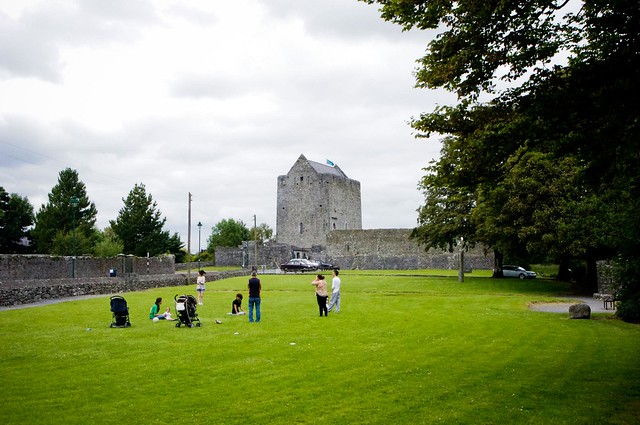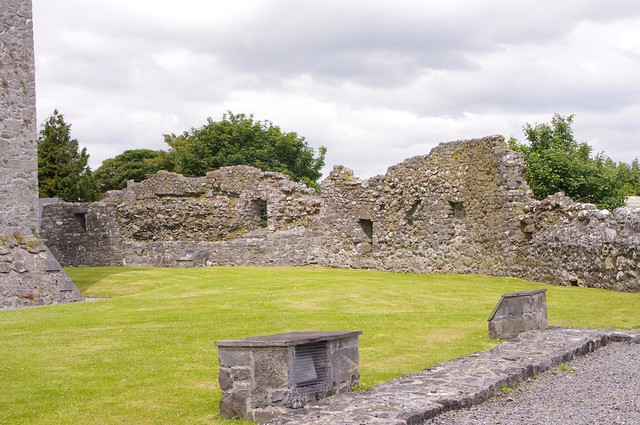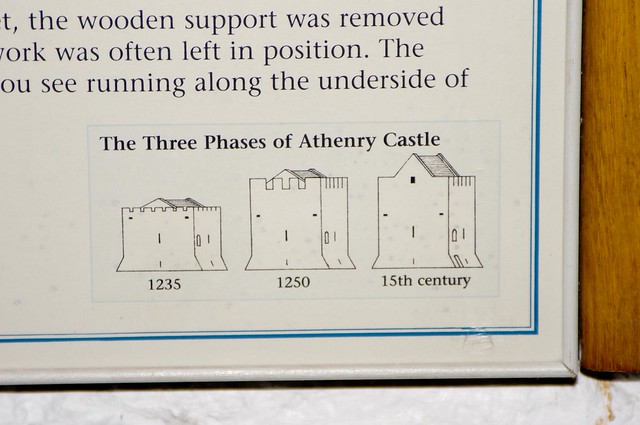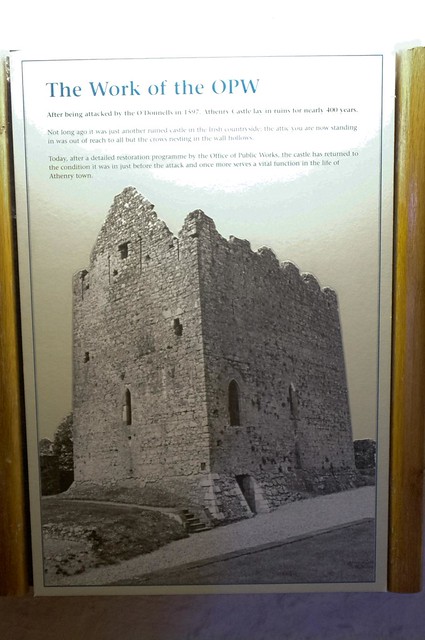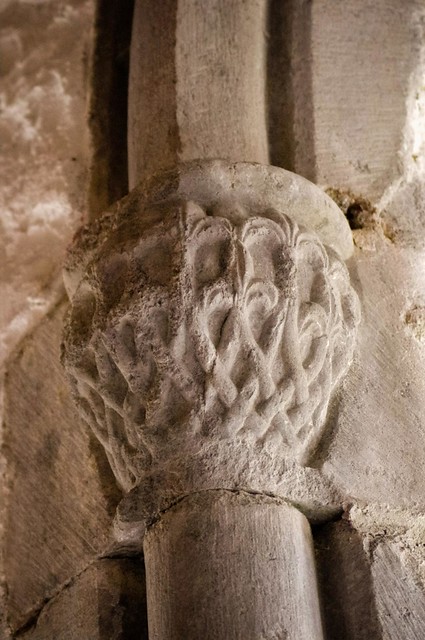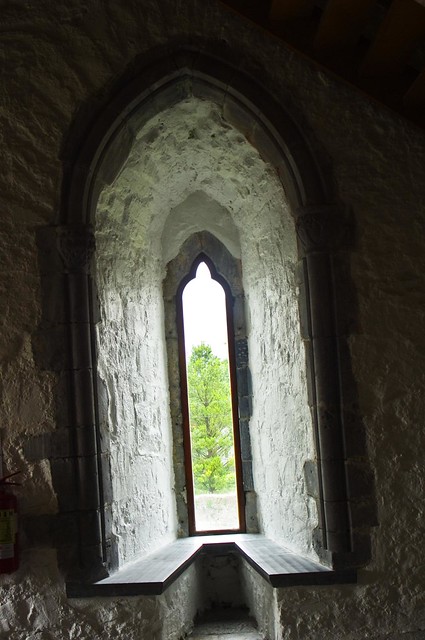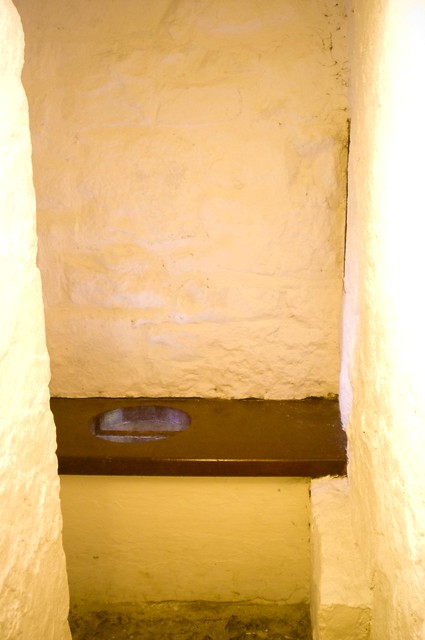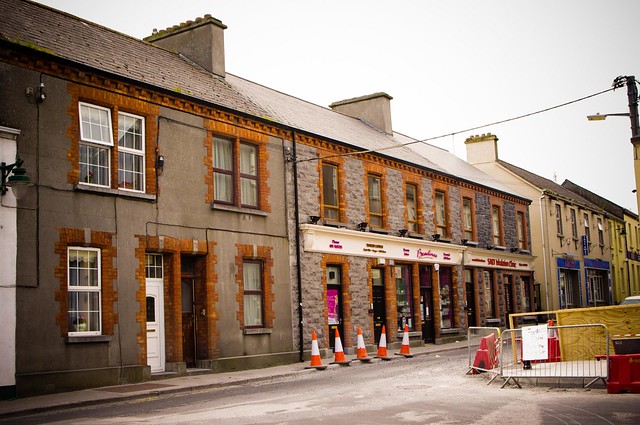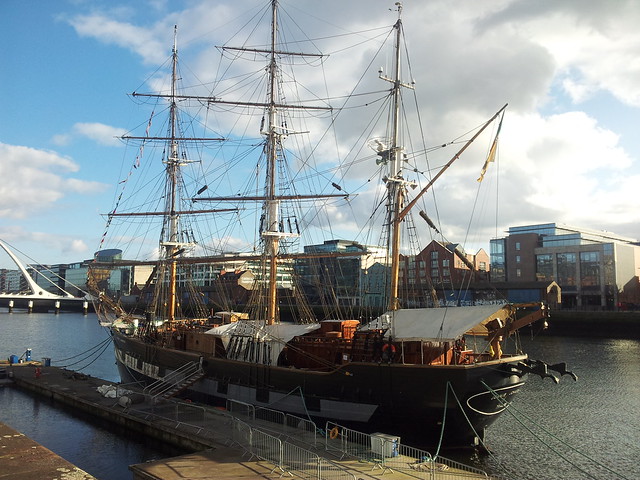I had the day off today. You know how when you’re used to being off on the weekends finally getting a day off during the week is refreshing? Well, for me, I took today off because I had to go get my residency permit from the Guarda office in Dublin. I came prepared – with a book, crocheting, and plenty of charge on my cell phone. The reason? The guarda office normally takes about 2-4 hours of waiting in uncomfortable chairs before you finally get to renew the residency permit.
Well, because I was so prepared for a long wait – the unthinkable happened. I arrived at 11:45 am and there were only 4 people in queue. I turned in my paperwork with in 10 minutes of arriving, and sat down to wait, figuring on at least an hour. Surprise Surprise – my name was called and I was out of the office by 12:30pm. Record time – less than 1 hour to get the residency permit renewed.
Thus, the question became, what do do with the rest of my day? Why – I was going to use the charge on my cell phone to document my day in the city and blog about it – because despite the overcast and gloomy morning the forecast said it might clear up by afternoon. So, I started walking up the quays and turned Left onto Hawkins street. Hawkins street has two interesting things on it – a cinema with a bronze statue of a cop in a rain slicker out front – and the long stone (which the Long stone pub is named after).
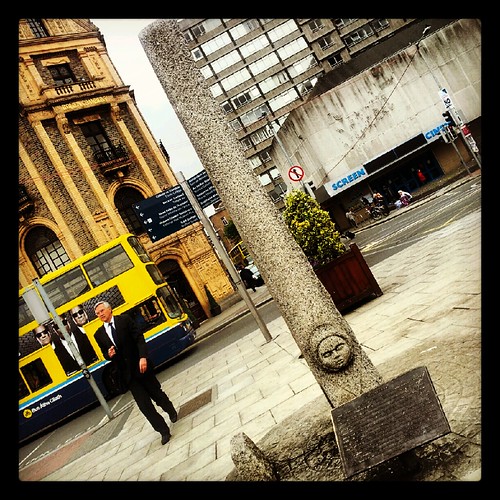
The stone has something to do with maritime tradition if I remember correctly, but I can’t exactly remember what it was. It’s a stones throw away from the river and not too far from the Dublin Harbor either. Plus, the monument sits right behind Trinity college. Turning Right off of Hawkins St, toward the old Bank of Ireland building, I decided to head past the college green and Dame street, beyond the Molly Malone statue and up Grafton street.
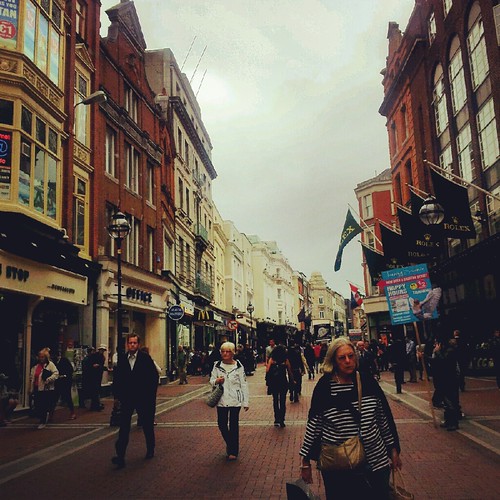
Grafton street is one of the main pedestrian thoroughfares with lots of shopping down each side of the street and on several of the side streets. During the weekends, it’s packed full of people strolling along and street performers that put on acts. During the week, there are still plenty of people, but you can actually move and breathe a bit.
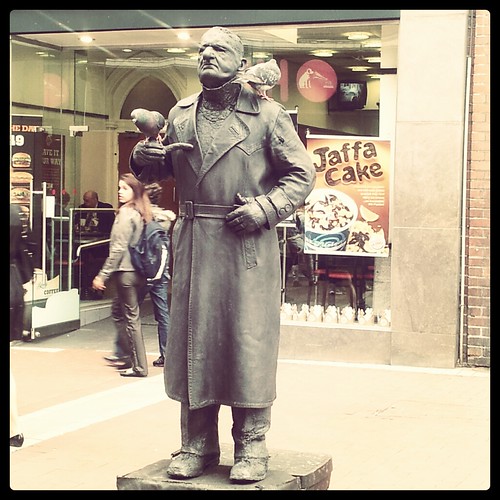
There are still street performers – but they arrive later in the day and mostly cater to tourists. From Grafton street, I decided to turn right down one of my favorite little alleyways. It’s tiny – only wide as a single car. There’s a church down here, and an entrance to a boutique shopping plaza that most people wouldn’t notice. Even better is that as you continue down the street, you discover custom jewelry shops (so expensive!) to window shop (it’s buzz to enter and you have to prove you have the cash) and vintage / antique jewelry shops. My personal favorite is the one on the left hand end – which specialises in Edwardian and art deco jewelry – and it’s rather reasonably priced for the age. Sadly, the shop is not open on Wednesdays, but it was worth checking anyhow.
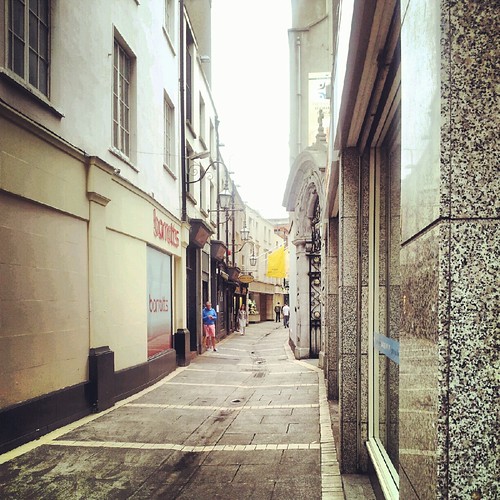
Returning to Grafton St, I headed toward St. Stephen’s Green shopping center, with the goal of checking out the sales, and having some lunch.

There are several things I like about this shopping center – it’s got a good variety of stores (though they’re not always inexpensive) but more importantly it has interesting architecture using glass and ornate windows and plenty of light – even on the gloomiest of days.
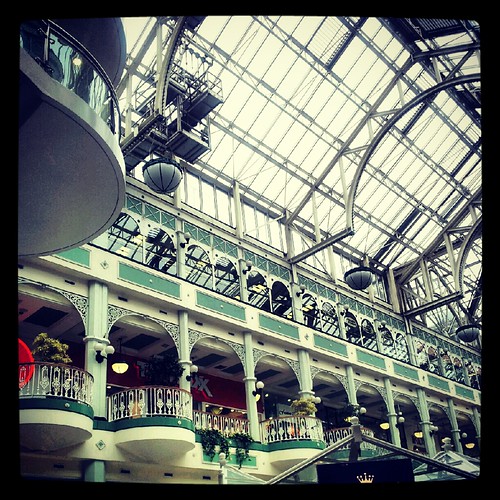
It also has a gallery exhibition space (more on that later) and at the very top floor, there’s a chinese buffet restaurant. Now the restaurant food isn’t anything special – but the views are well worth it. From the round peak, you can look one way down Grafton street and watch the people milling about. Down the other direction you can see St. Stephen’s Green south (Street) and the park entrance itself.
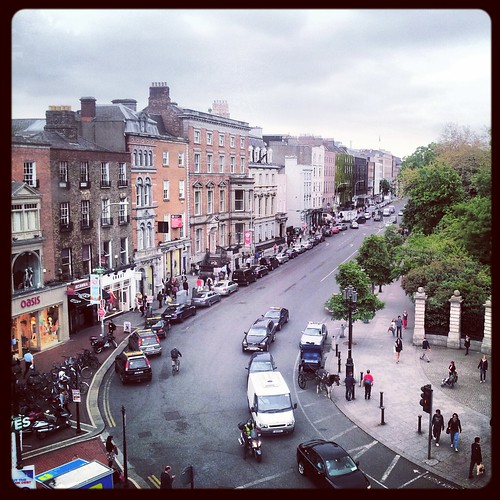
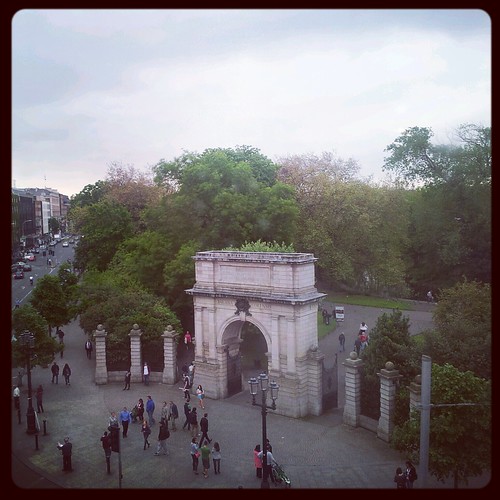
As I was finishing eating, I noticed the sun was coming out. It was too good to pass up, so I went on through St. Stephen’s Green Park.

I’ll be honest and say that the park is pretty. It has a lake, pavillions, lovely statues and some beautiful fountains. The problem with the park is that it’s well known and busy. Everyone comes here at some point – and it seems to be the Dubliner’s central retreat to go sit in at any time of day to avoid the city – especially when the weather is nice. As I walked through, I noticed people reading on their phones and kindles, listening to mp3 players, feeding the ducks and pidgeons, meditating on beads, walking babies in prams, chatting, holding hands, reading maps… wandering about…

but on some level, it is just too busy to me. It’s fine to wander through (the grass is blocked off so you’re not supposed to sit on it) or enjoy a bench if you can find a slot, but it’s not relaxing because there’s always people there. It’s not quiet because there’s always people there.
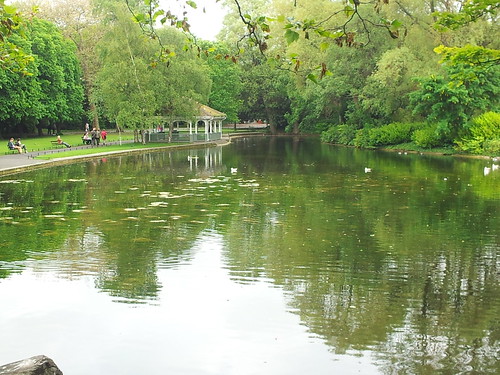
What to do? Well, I use St. Stephen’s green as a pleasant walk to get to somewhere else – two blocks north – to get to another park that’s just as big – but not as well known – and which is one of Dublin’s hidden treasures. What is it? Iveagh Gardens.
More on Iveagh Gardens tomorrow…


